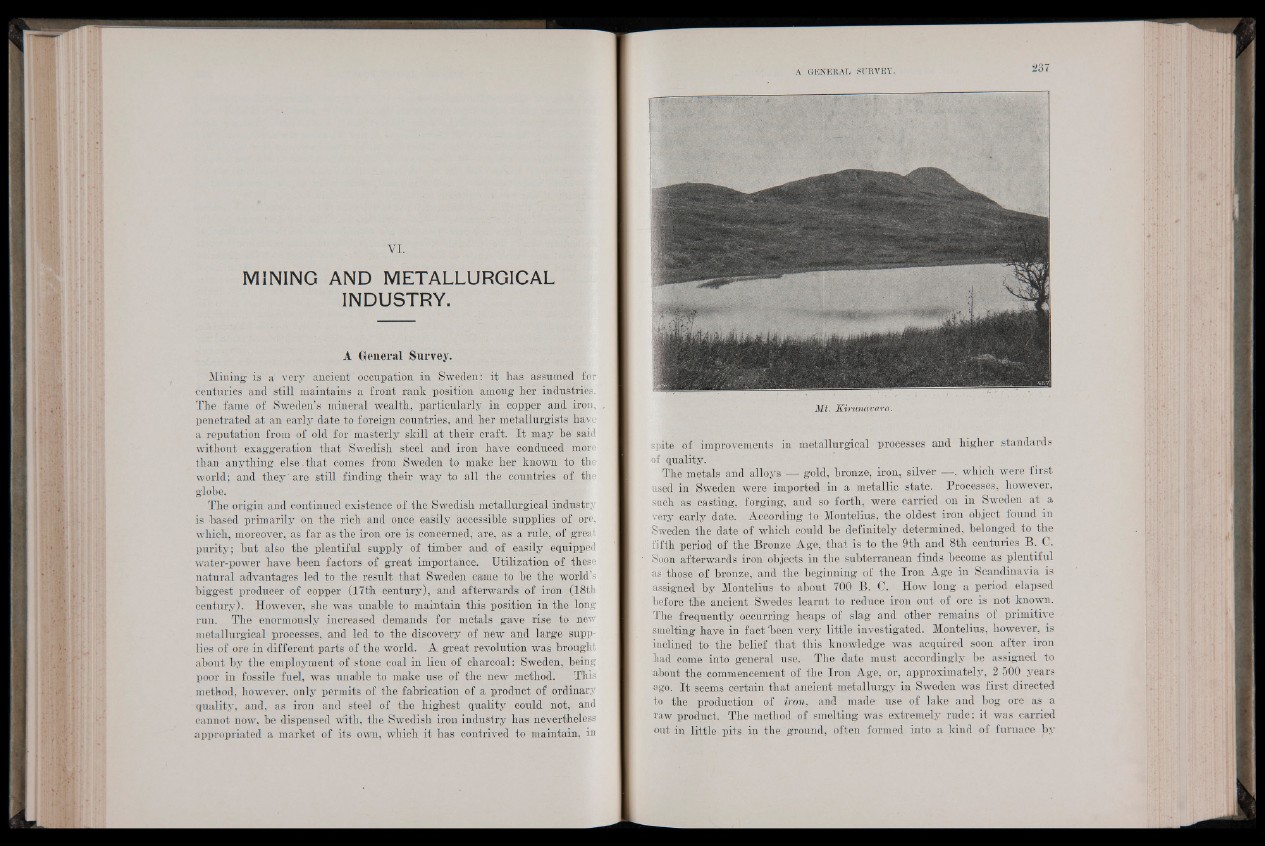
MINING AND METALLURGICAL
INDUSTRY.
A General Survey.
Mining is a very ancient occupation in Sweden: it has assumed for
centuries and still maintains a front rank position among her industries.
The fame of Sweden’s mineral wealth, particularly in copper and iron,
penetrated at an early date to foreign countries, and her metallurgists have
a reputation from of old for masterly skill at their craft. It may be said
without exaggeration that Swedish steel and iron have conduced more
than anything else.that comes from Sweden to make her known to the
world; and they' are still finding their way to all the countries of the
globe.
The origin and continued existence of the Swedish metallurgical industry
is based primarily on the rich and once easily accessible supplies of ore,
which, moreover, as far as the iron ore is concerned, are, as a rule, of great
purity; but also the plentiful supply of timber and of easily equipped
water-power have been factors of great importance. Utilization of these
natural advantages led to the result that Sweden camae to be the world’s
biggest producer of copper (17th century), and afterwards of iron (18th
century). However, she was unable to maintain this position in the long
run. The enormously increased demands for metals gave rise to new
metallurgical processes, and led to the discovery of new and large supplies
of ore in different parts of the world. A great revolution was brought
about by the employment of stone coal in lieu of charcoal: Sweden, being
poor in fossile fuel, was unaible to make use of the new method. This
method, however, only permits of the fabrication of a product of ordinary
quality, and, as iron and steel of the highest quality could not, and
cannot now, be dispensed with, the Swedish iron industry has nevertheless
appropriated a market of its own, which it has contrived to maintain, in
Mt. Kinmavara.
spite of improvements in metallurgical processes and higher standards
of quality.
The metals and alloys —■ gold, bronze, iron, silver —, which were first
used in Sweden were imported in a metallic state. Processes, however,
such as casting, forging, and so forth, were carried on in Sweden at a
very early date. According to Montelius, the oldest iron object found in
Sweden the date of which could be definitely determined, belonged to the
fifth period of the Bronze Age, that is to the 9th and 8 th centuries B. C.
Soon afterwards iron objects in the subterranean finds become as plentiful
as those of bronze, and the beginning of the Iron Age in Scandinavia is
assigned by Montelius to about 700 B. C. How long a period elapsed
before the ancient Swedes learnt to reduce iron out of ore is not known.
The frequently occurring heaps of slag and other remains of primitive
smelting have in fact 'been very little investigated. Montelius, however, is
inclined to the belief that this knowledge was acquired soon after iron
had come into general use. The date must accordingly be assigned to
about the commencement of the Iron Age, or, approximately, 2 500 years
ago. It seems certain that ancient metallurgy in Sweden was first directed
to the production of iron, and made use of lake and bog ore as a
raw product. The method of smelting was extremely rude: it was carried
out in little pits in the ground, often formed into a kind of furnace by